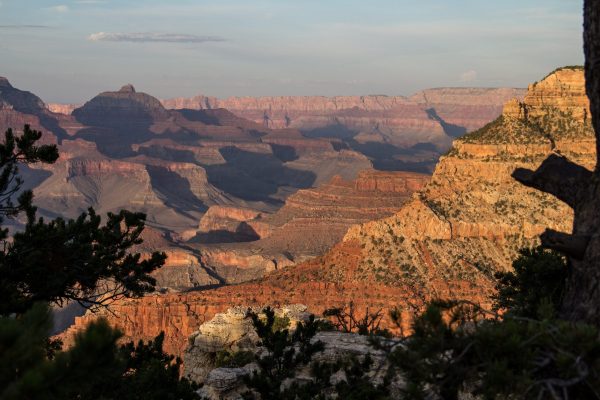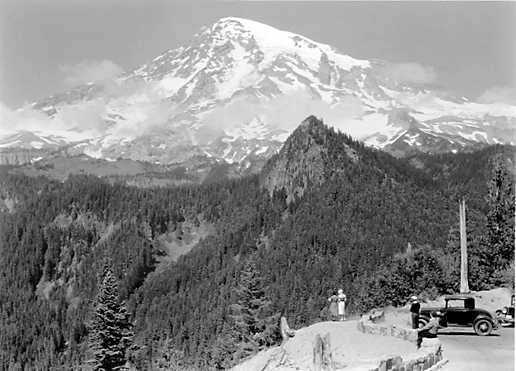Making memories of a grand land
“Don’t go so close to the edge,” my parents yelled. I rushed to grab my first glimpse of the Grand Canyon.
That must be a thousand feet down, I thought. Once I’d seen it in person, I knew why the Grand Canyon was one of the Seven Wonders of the Natural World. Only now that I’m older do I fully understand what this trip meant for my family.
It was priceless.

How much is a family willing to pay for a priceless experience? With a five dollar fee increase across 117 fee charging park service units this summer we will have to wait and see.[1]
Funding and fees in the National Parks
A few questions come to mind when reflecting on this increase. What is the increase for? How will it affect our experience at the National Parks? What can history teach us about the proposed National Park fee increases and funding?
The proposed increase, according to Ryan Zinke, U.S. Secretary of the Interior, is necessary because “the infrastructure of our national parks is aging and in need of renovation and restoration.”[2] The increase could generate close to $60 million that would help cover the costs that current levels of federal funding leave unmet.
The NPS has raised entrance fees at parks many times over its history. All the way back in 1908, Mount Rainier National Park was the first unit to implement automobile entrance fees to cover road maintenance costs. Ever since, debates over whether or not we should have fees, where fees should be implemented, and how much parks should charge.

Years later in the 1950s, attendance to National Parks boomed and created a need for additional park infrastructure and maintenance. Visitors to the National Parks in the post-war era consumed park resources, much like visitors to parks today. Steps had to be taken to safeguard those resources for future visitors as well. Conrad Wirth, then-Director of the NPS, proposed a restoration project, Mission 66. [3] According to architectural historian Christine French, “the parks and the public enjoyed a wealth of modern services, including 584 new comfort stations, 221 administrative buildings, 36 service buildings, 1,239 units for employee housing, and more than 100 new visitor centers.”[4] This project increased the enjoyment and education in the National Parks.
Putting current proposal on fees into historical perspective
The goal of the proposed fee increase is similar to Mission 66 in that National Parks will hopefully receive a much-needed upgrade. However, the budget would come from visitors’ pockets, rather than from an increase in federal funding. Park users need to think of these issues as a continuation of a trend of increased park visitation that has deep historical roots.
A five dollar increase spread over 117 parks does sound better than a seventy dollar increase at the most popular parks. But what are the other public costs of increased fees?[5] Some claim that this increase will only lead to the privatization and exclusion in the National Parks. Zinke himself has been accused of taking steps to privatize the parks before. His proposal to open coastal land for oil drilling and rolling back federal land protections makes conservationists and other outdoors stakeholders quick to doubt his motives.[6]
Making the public’s voice heard on NPS fees
“Don’t worry,” said Gina McCarthy, former administrator for the Environmental Protection Agency. McCarthy offered a forcefully optimistic message at Colorado State University on February 28, 2018. She claimed that the government is indeed in uncertain times, but it won’t last forever. People, she assured the audience, have a bigger voice than they might think.
True to McCarthy’s prediction, the people made their voices heard during the Department of Interior’s public comment period about fee increases, which led the Department of Interior to change its plan. With ongoing cuts to federal spending underway, it is understandable why an increase was under consideration, but it’s also good to know that the public’s input is still being considered under the current administration.
Conclusion
History shows us that the problems facing public lands are nothing new. Fees (and fee increases) go back practically to the park service’s earliest days. Parks have always dealt with upkeep and funding issues. The more that we use parks, the more wear and tear we see in them. Maintaining the parks for future generations required far-sighted initiatives like Mission 66. Mission 66 addressed not only its own time’s challenges, but also took the parks’ next hundred years into account.
In the current negotiations over fee increases, we see that the public has a strong voice in how parks are funded and managed, no matter which party holds the presidency or a Congressional majority. If you didn’t leave a comment during the open comment period click here to see what other proposals are being made within the National Park Service and make your voice heard. Help to keep the enjoyment of America’s public lands priceless.
By Adam Ekstedt, CSU Communications major, Sustainability minor, CSU ’19
Published 05/11/2018
Sources
[1] . “What You Need to Know about the National Park Fee Increase.” The Mountaineers. April 16, 2018. Accessed April 25, 2018. https://www.mountaineers.org/blog/what-you-need-to-know-about-the-national-park-fee-increase.
[2] “National Park Service Proposes Targeted Fee Increases at Parks to Address Maintenance Backlog 2.” National Parks Service, U.S. Department of the Interior, 2017, www.nps.gov/orgs/1207/10-24-2017-fee-changes-proposal.htm
[3] . Christine M. French, “The Emergence of the Mission 66 Visitor Centers.” Mission 66, Mission 66, www.mission66.com/mission.html
[4] Mission 66 was the biggest renovation project in NPS history. Take a look at the history of what turned National Parks into the modern spectacle that they are today.French, Mission 66.
[5] “What You Need to Know about the National Park Fee Increase.” The Mountaineers. April 16, 2018. Accessed April 25, 2018. https://www.mountaineers.org/blog/what-you-need-to-know-about-the-national-park-fee-increase.
[6] Lauren Katz, “Ryan Zinke Spent His First Year in Office Selling off Our Public Lands .” MSN News, MSN, 5 Mar. 2018, www.msn.com/en-us/news/politics/ryan-zinke-spent-his-first-year-in-office- This is an informative story and worth the read if you would like to learn the history of National Park fees and the debates that ensued.